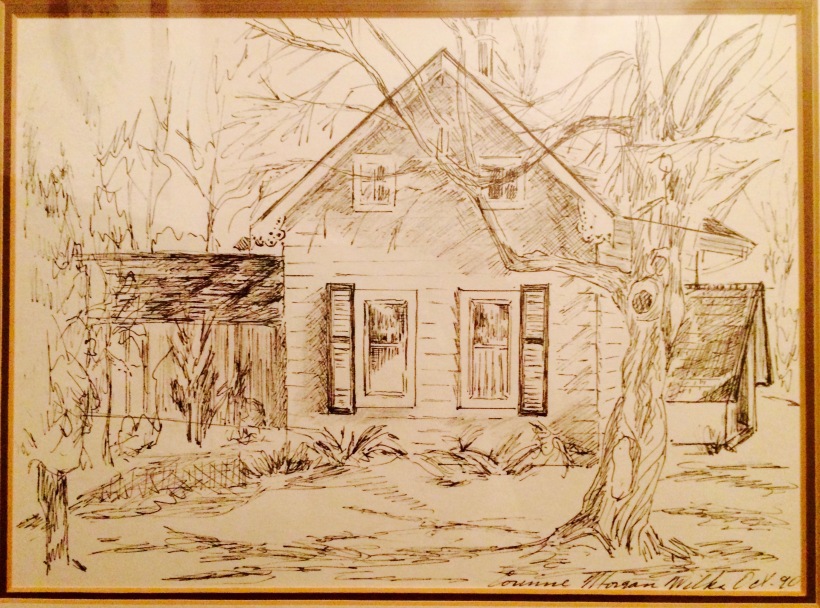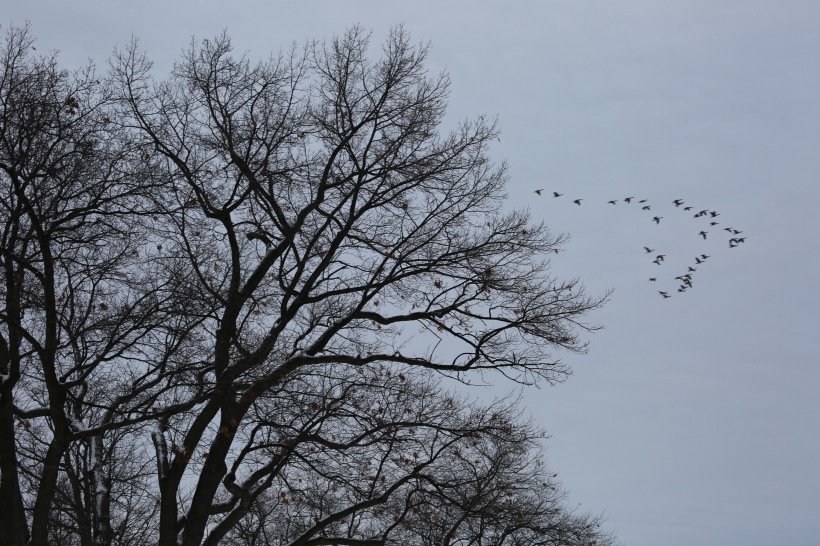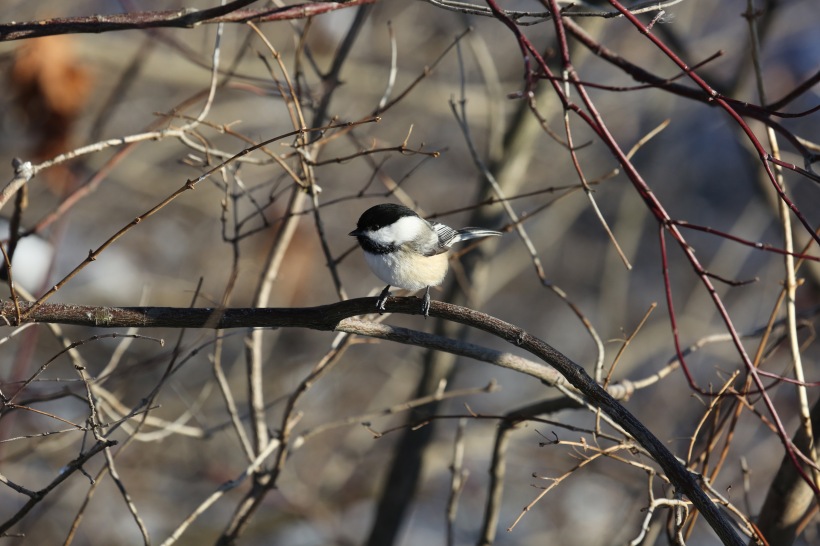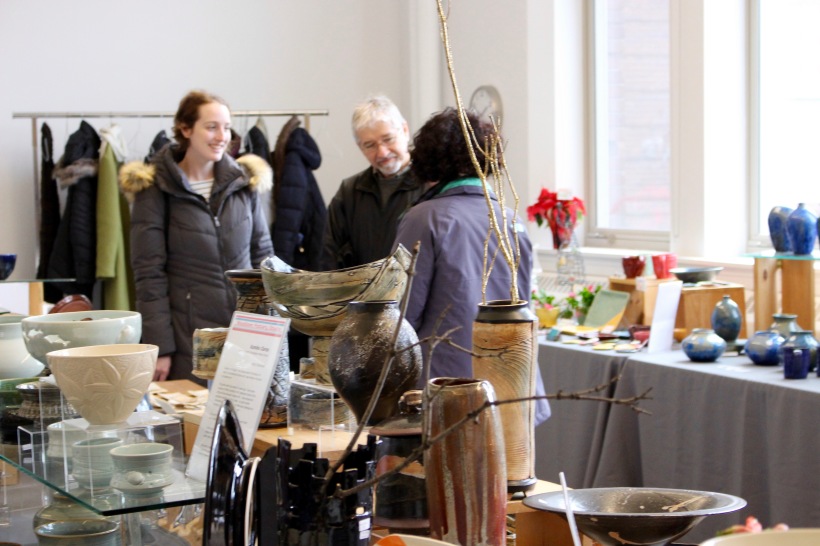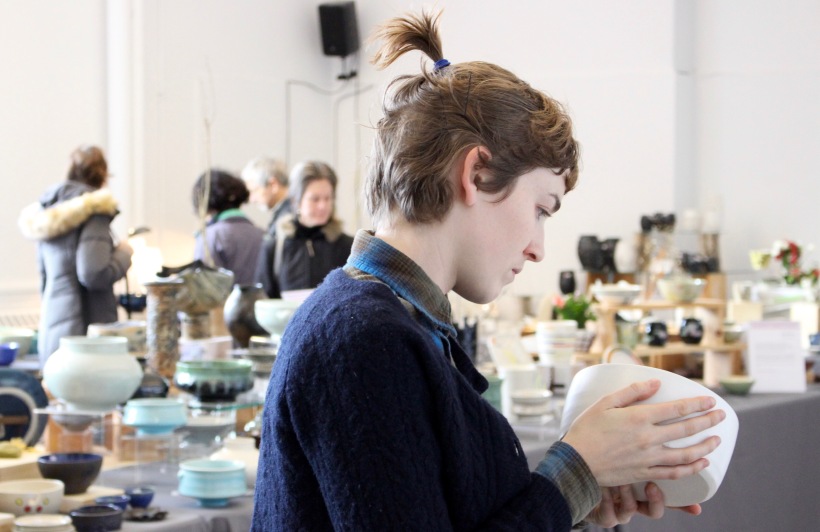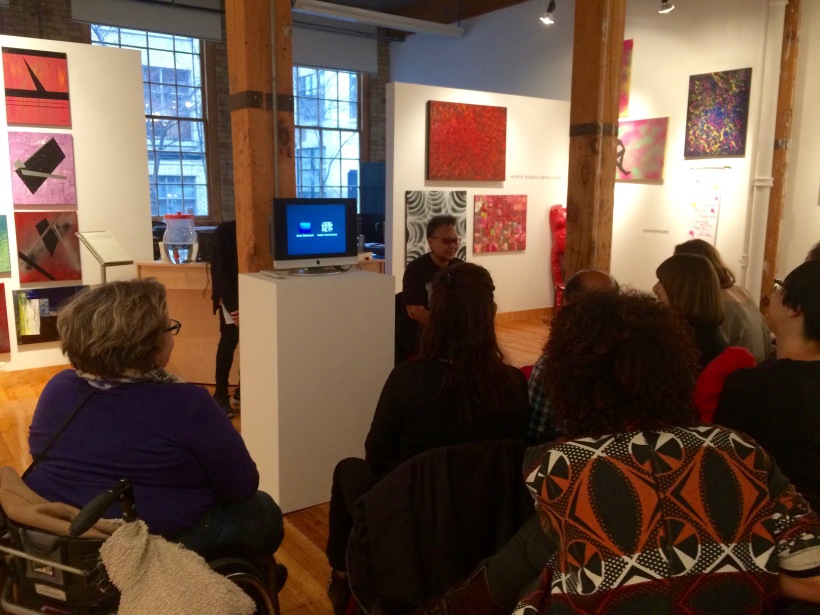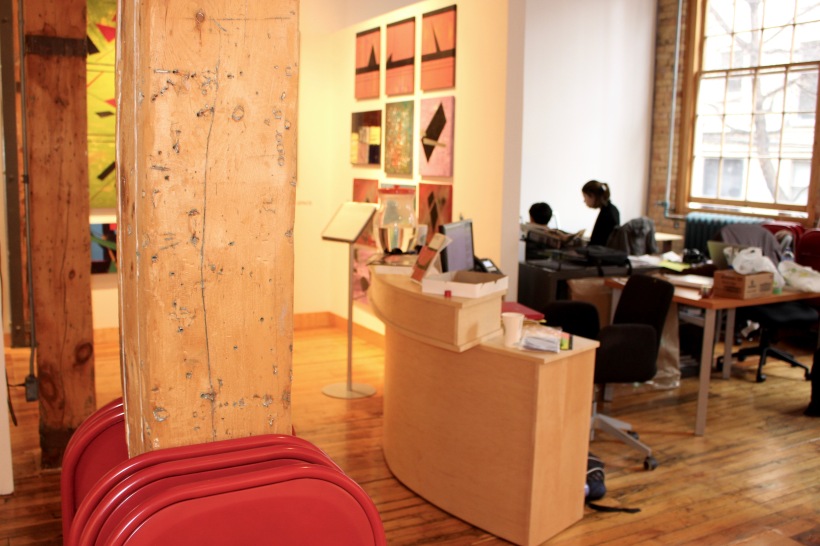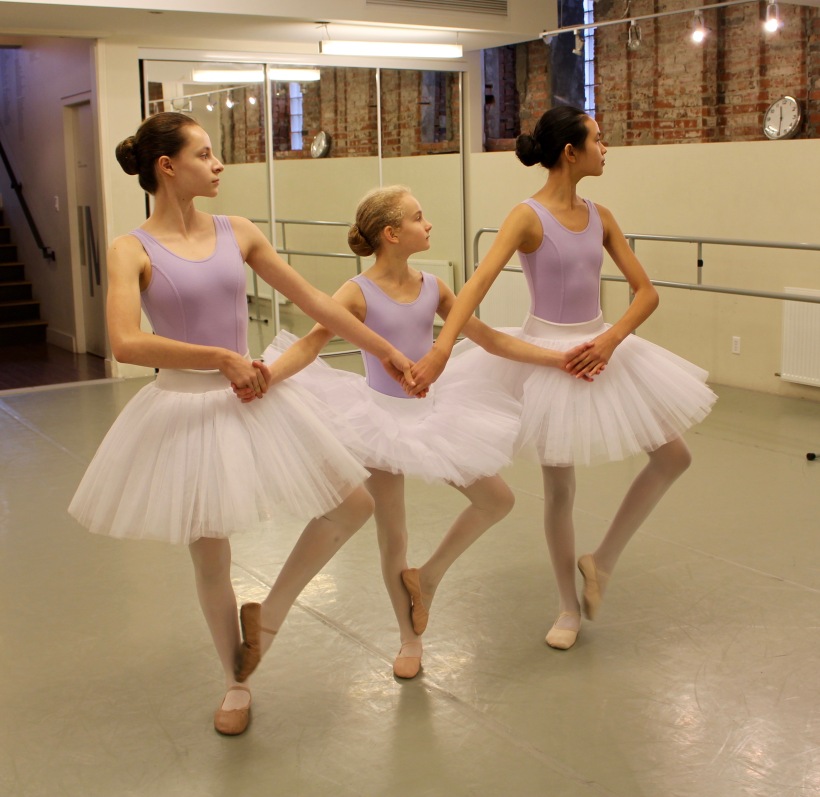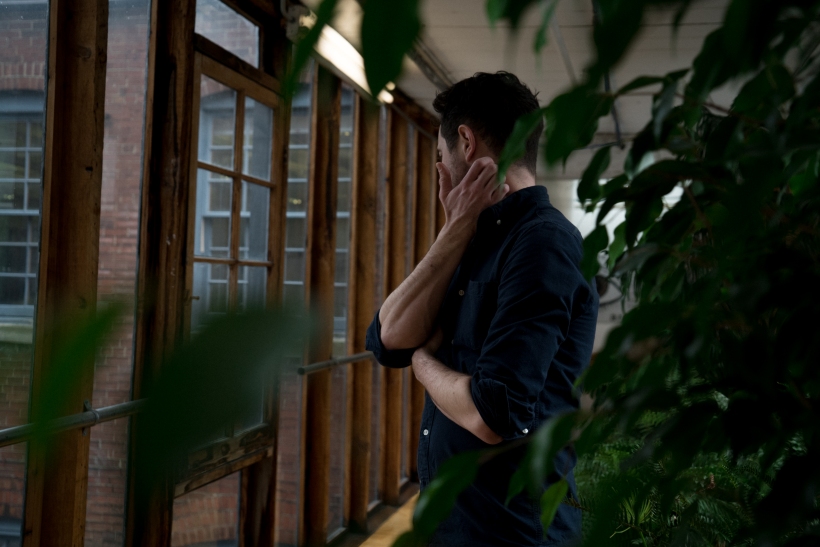Anyone who’s had a great haircut knows that the best hair stylists are, in fact, artists. They’re sculptors whose medium is hair.
The current exhibit Intuition at Art Square Gallery and Café shows that hair — in its own right — can be sculpture. It’s the brainchild of hair stylists Erika Fung and Arisa Yamasaki and wearable art designer Shirley (Xue) Liang.
Every sculpture in this show features human hair, synthetic hair or extensions. Some hair was donated by friends. A lot was collected from the hair salon floors.
For Fung, who studied Fine Art at the University of Waterloo, it’s not that far a stretch to create sculpture from hair. She is a hairdresser specializing in avant-garde hairstyles. But the show was a chance to explore her emotions in more depth – hence the title Intuition.
“I had to get this stuff out, otherwise it would be cluttered in my head,” she says with a smile.
Natasha Gerschon, a professional image maker who produced photos and video for the show, says the goal of the exhibit is to give gut feelings a physical presence.

“Intuition is not tangible – but we’re giving a visual to go with it,” she says, noting that she chose dreamlike music to heighten viewers’ emotional response.
Shirley Liang added to the show’s spellbinding effect with dramatic masks, headpieces and a surreal chest piece. The piece below, which looks like seashells, is actually made of pistachio shells and sunflower seeds.

After they brought Gerschon on board, Fung, Yamasaki and Liang recruited other creative talents in the fashion industry to collaborate on the show:
- Kelvin Roman Lau, a recent Ryerson fashion grad, whose designs are highlighted in the photos and video
- Tiffany Hung of Plutino Models, a highly expressive model featured in the video and photos
- Makeup artists Melanie White and Christina Nguyen, who provided the model’s makeup
Fung says they provided each member of the collaborative team with a brief overview of what they were looking for, but encouraged them to use their own intuition in creating their work.
“If you give too much guidance, it’s forced,” she says.
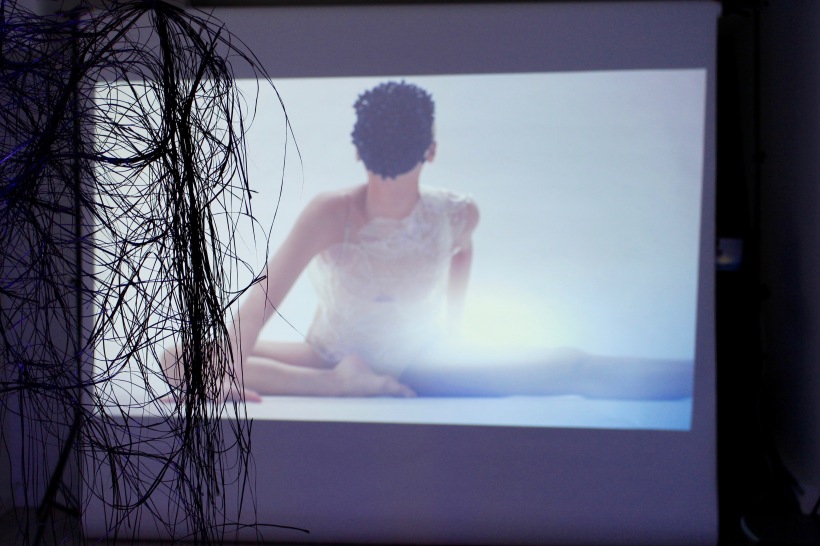
Fung was delighted with the turnout to the opening, especially seeing her friends from the salon coming out.
“I was very overwhelmed,” she says. “Everyone was very happy and very supportive.”
Hopefully that support will encourage these hairstylists to make more art in the future.
The show is on daily from 9 to 11 a.m. now through March 5 at the Art Square Café and Gallery, 334 Dundas St. W.








